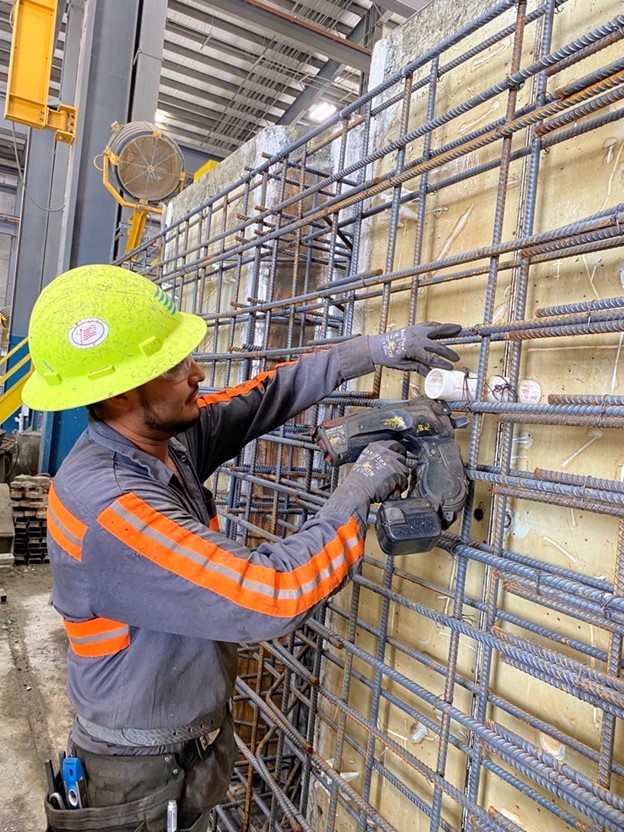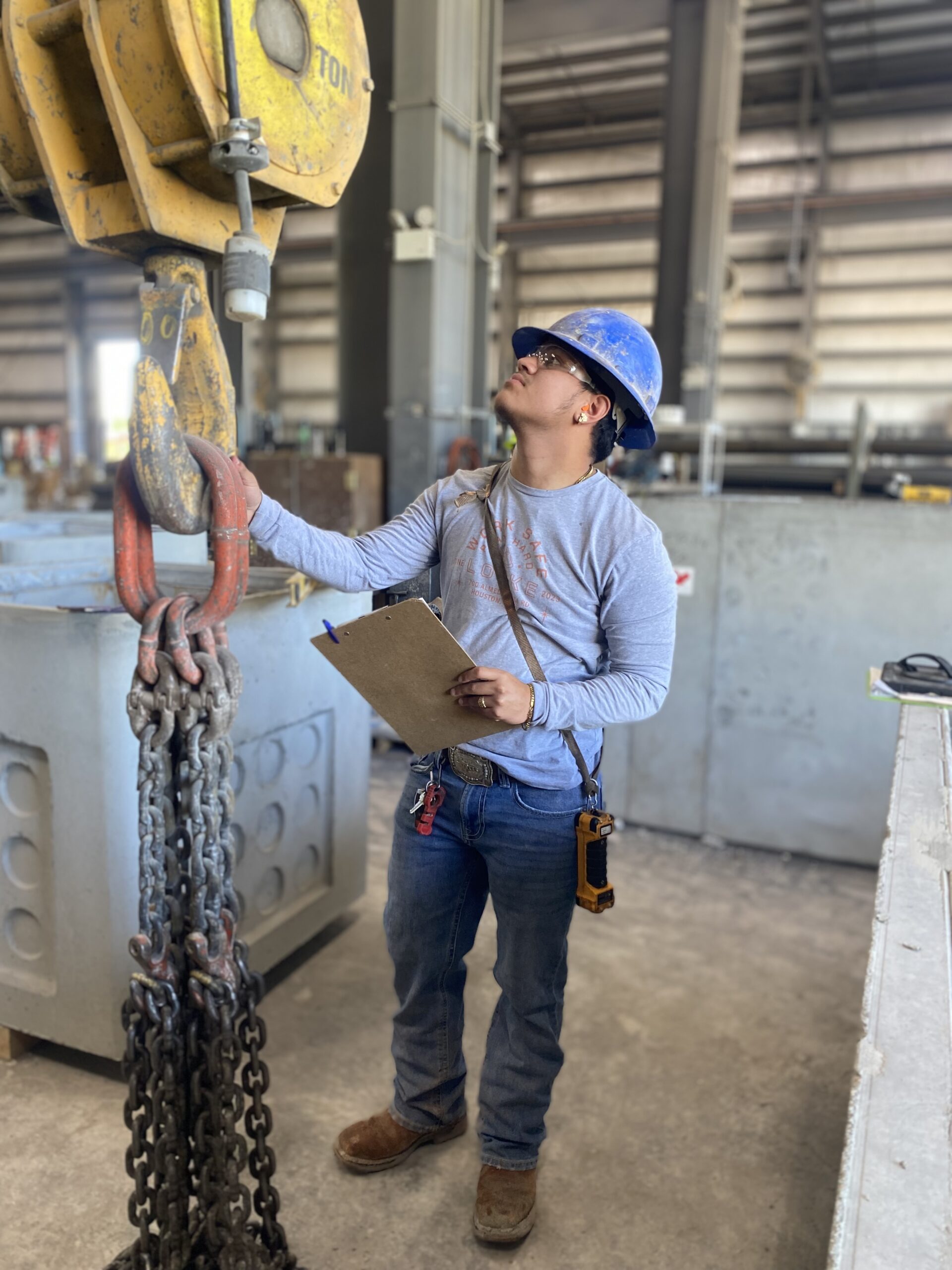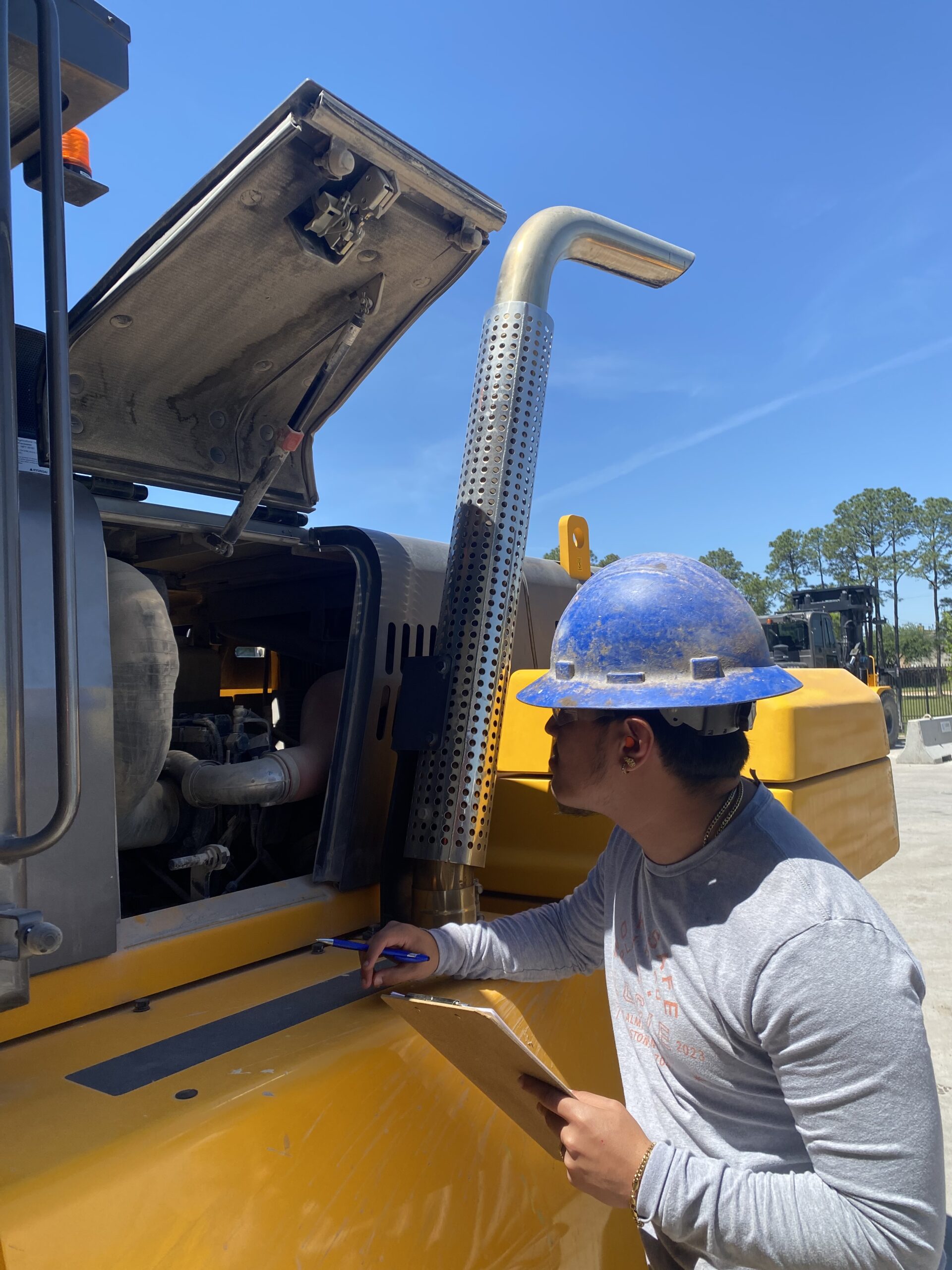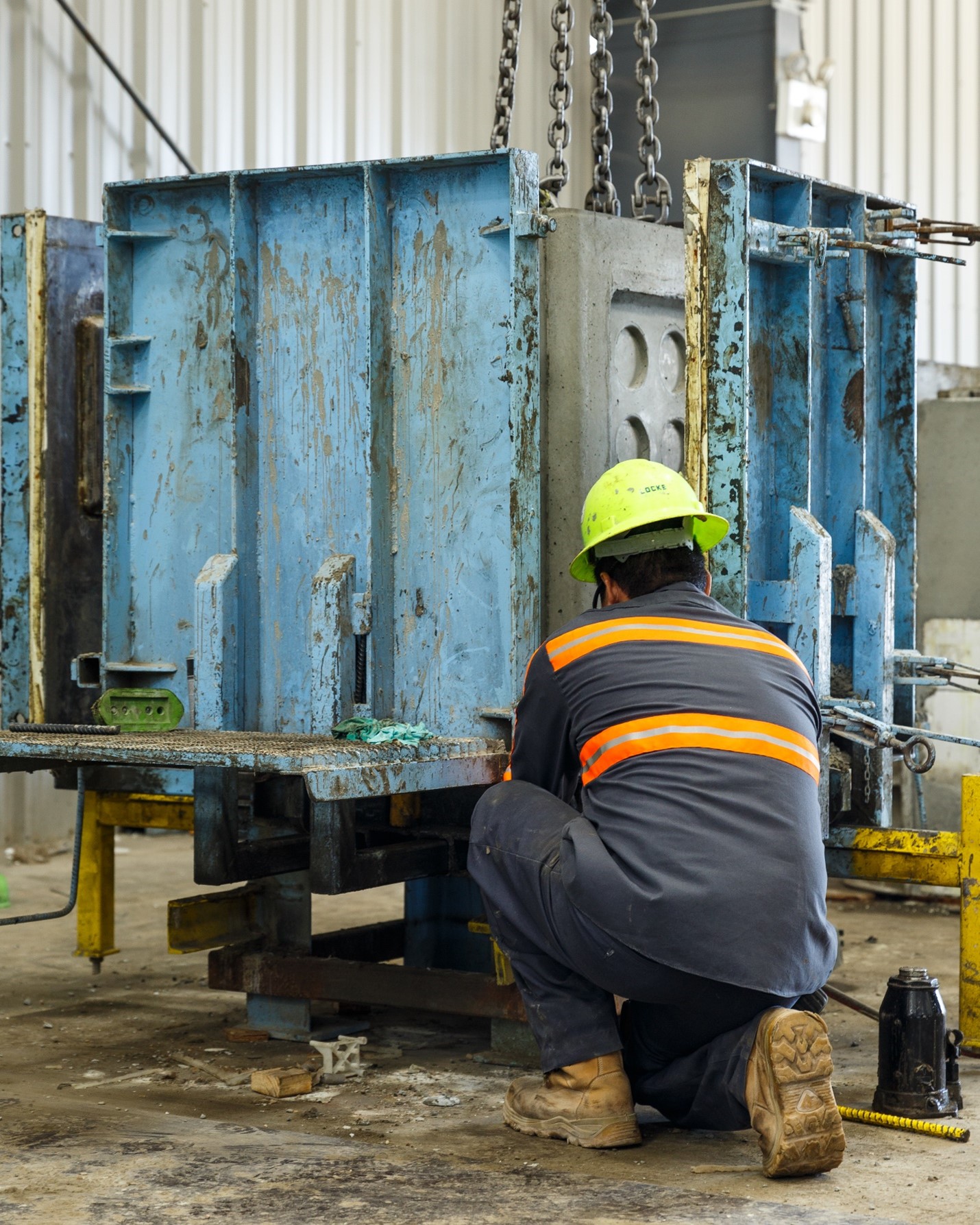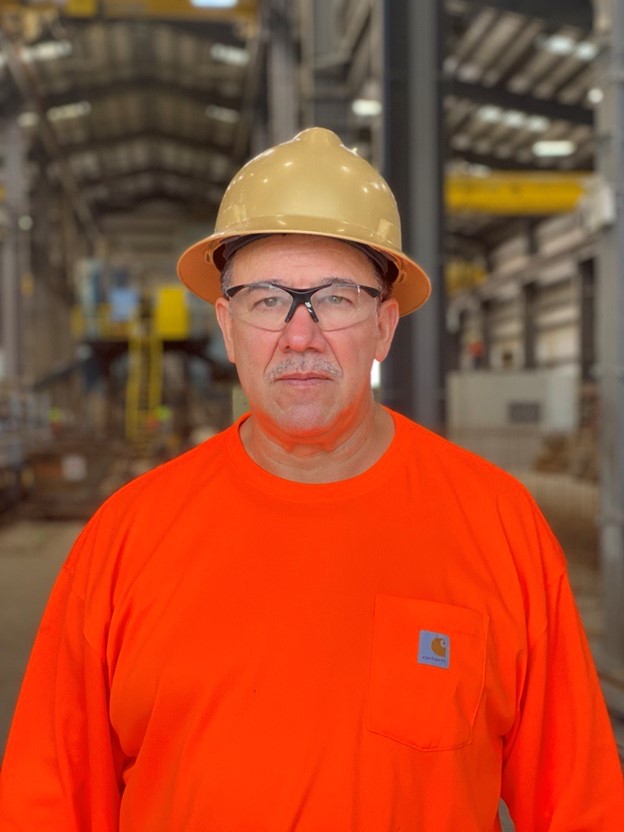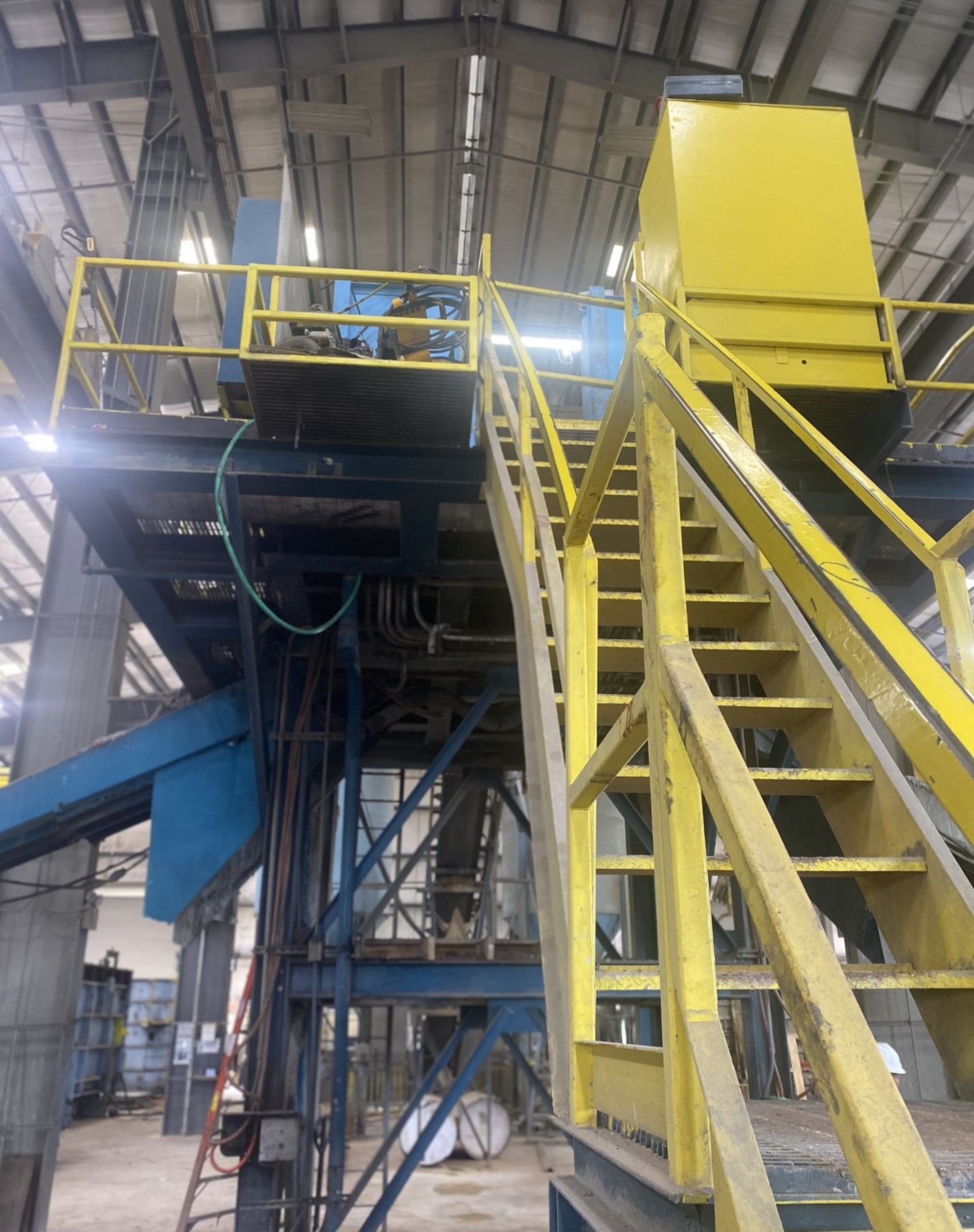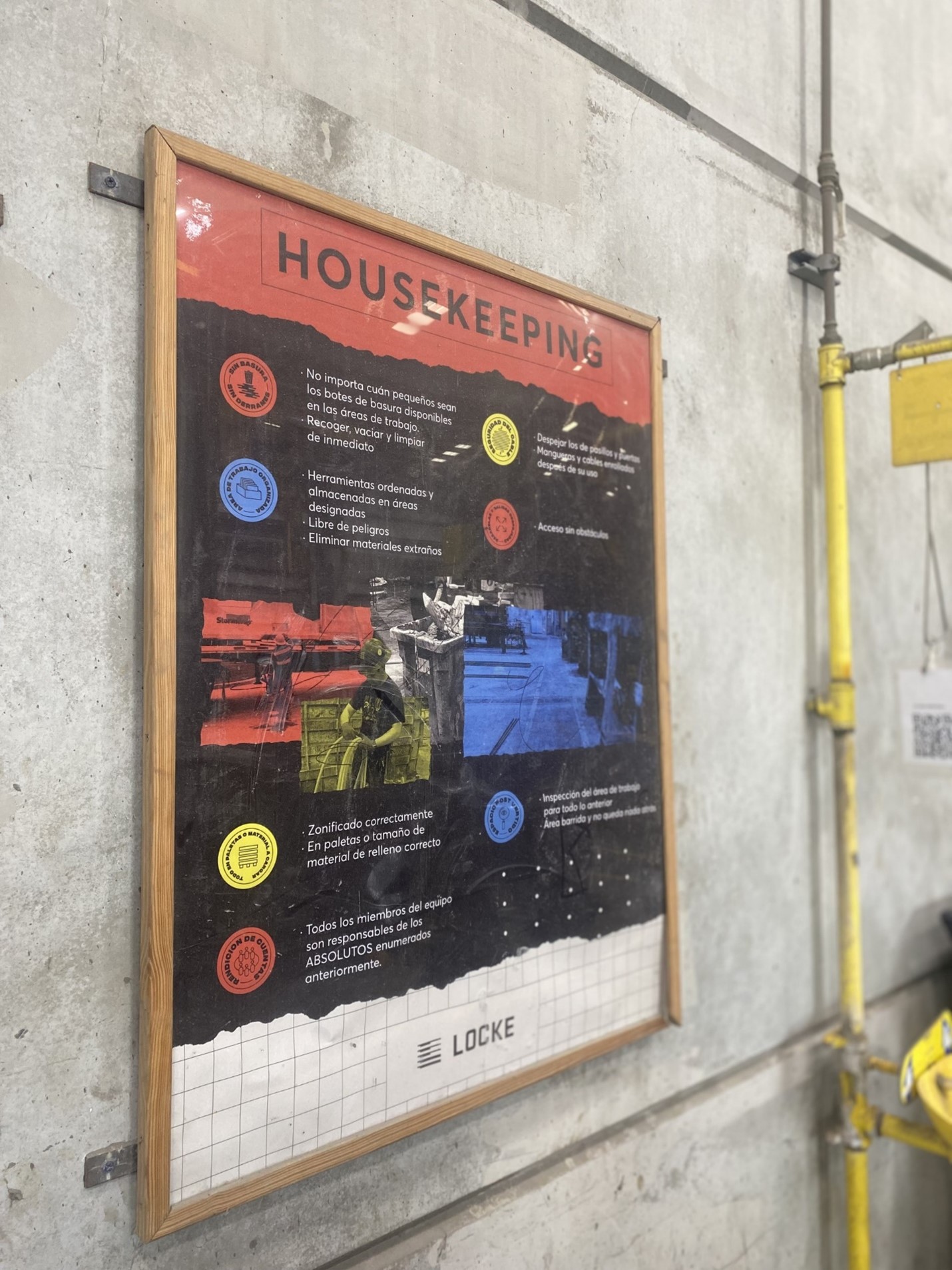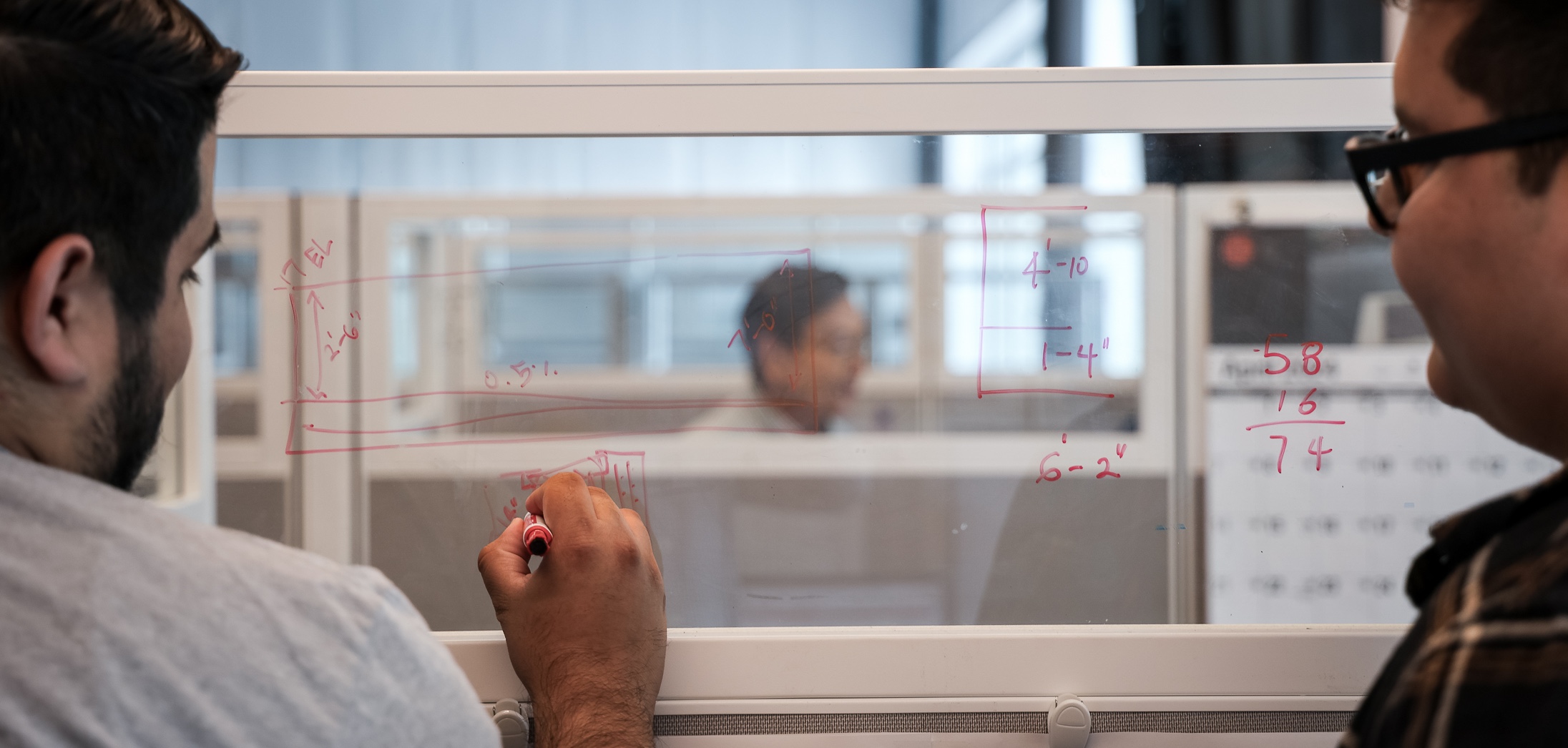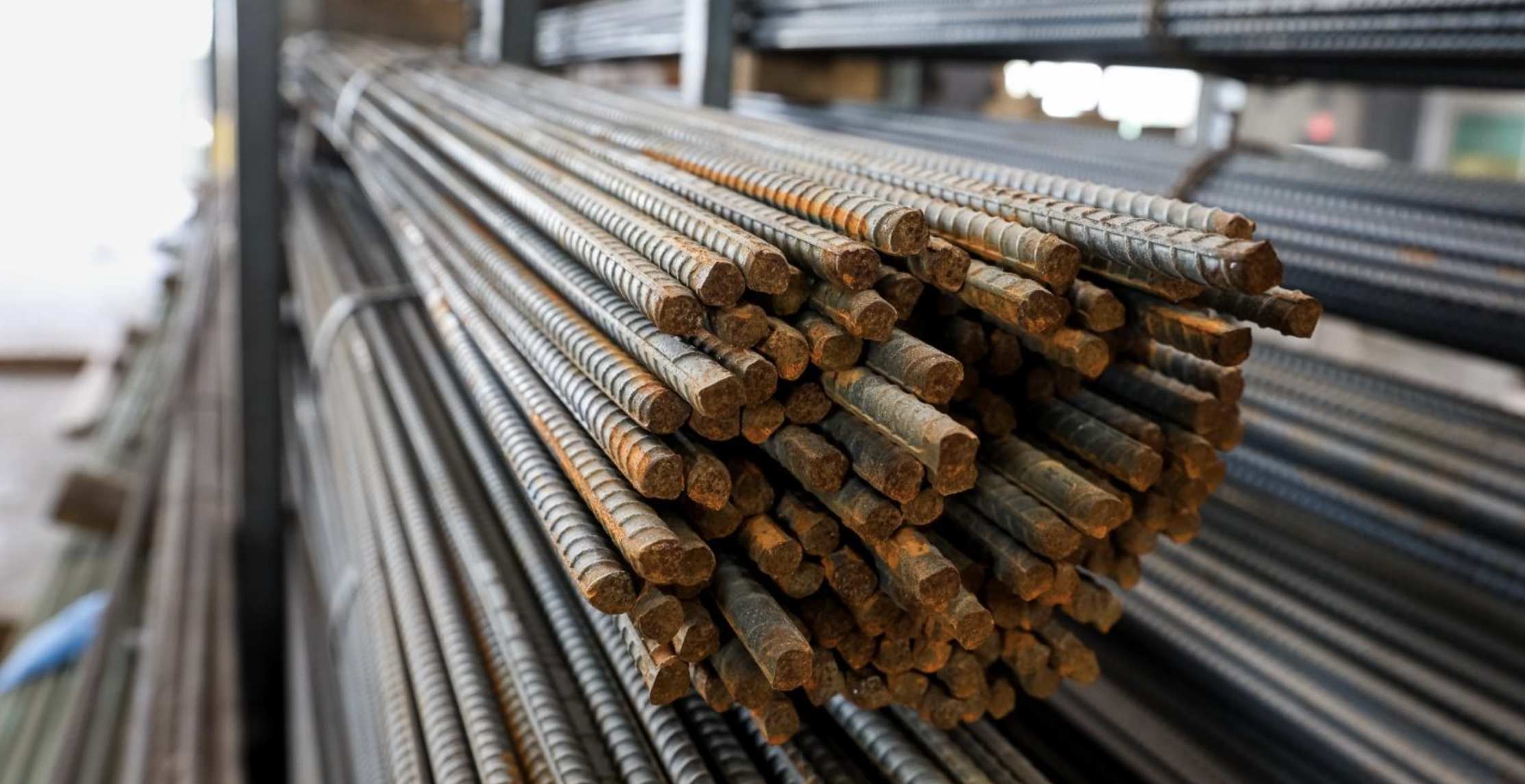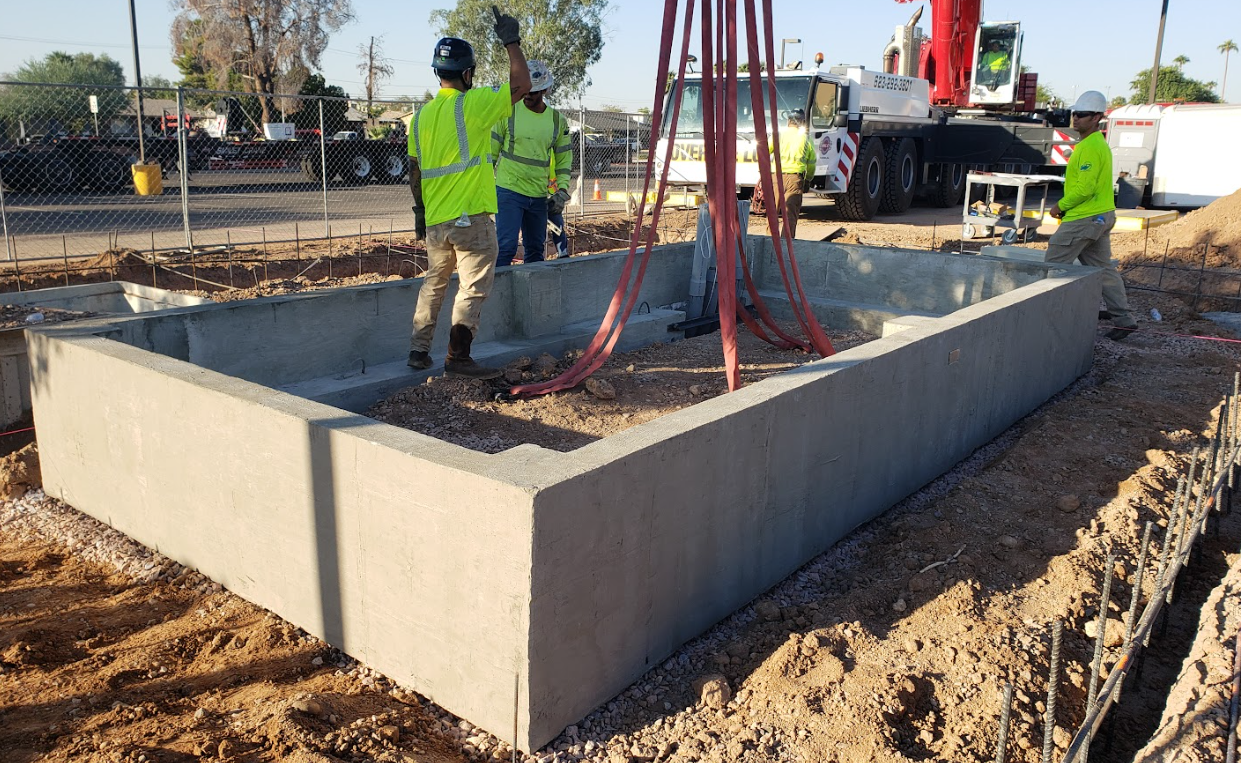Leading Precast
Contact Sales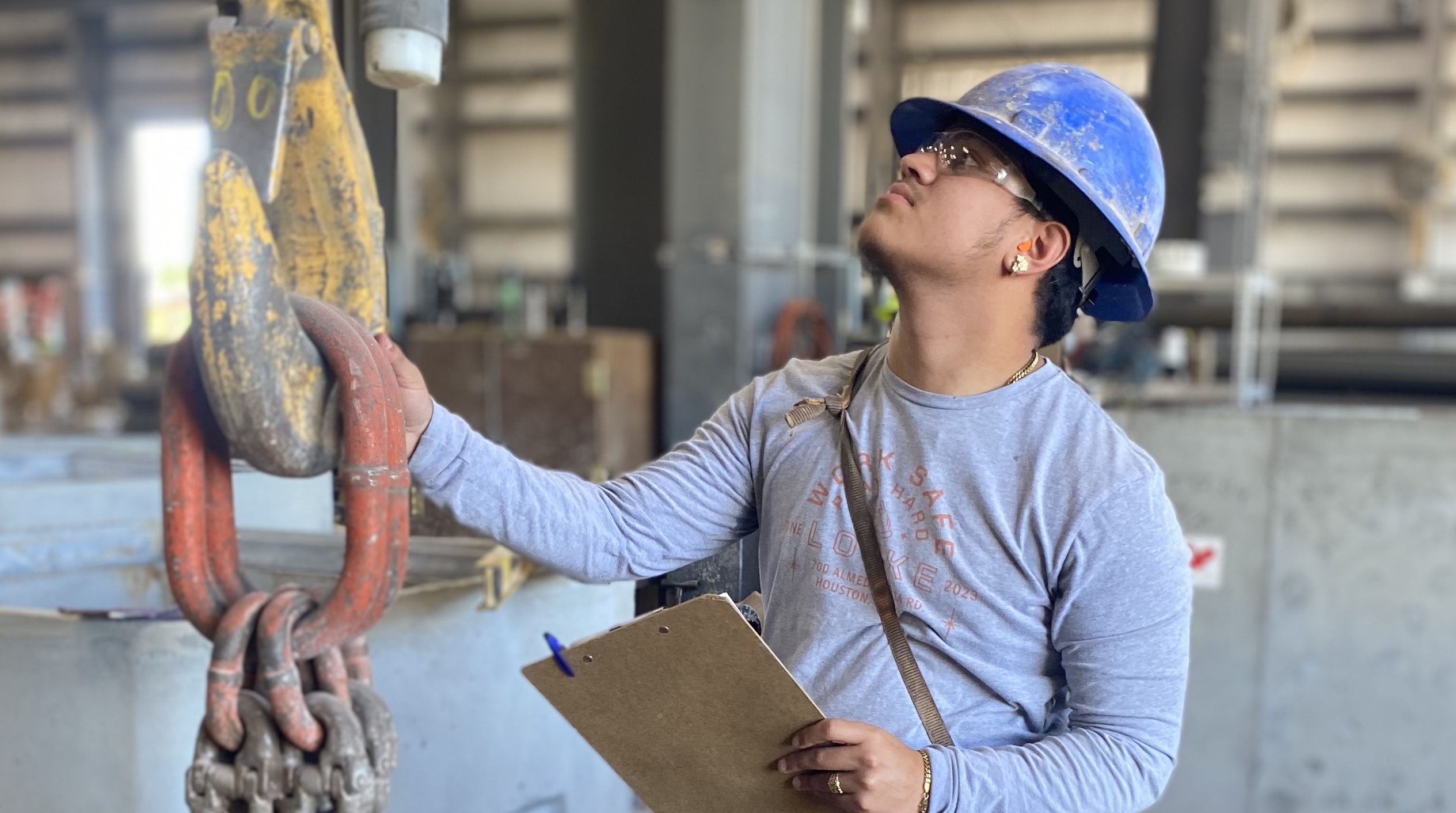
When working around concrete structures that weigh thousands of pounds, it is critical that safety is at the forefront of everyone’s minds. A missed item on a checklist or a poorly designed product could have a detrimental effect should something go wrong. Because of this, an effective safety program, a sound safety culture, and a properly designed product all go into making sure that we are providing a safe working environment for all.
There are many safety measures in place that ensure the safety of everyone, but it all starts with an effective safety program. HSE supervisors are in charge of implementing and overseeing the execution of a facility’s safety program, with tasks ranging from daily checklists to monitoring the condition of equipment being utilized. These daily checklists include the inspection of the overhead crane and the forklift.
When inspecting the overhead crane, upon confirming that they are authorized to operate the crane, plant employees must ensure that there are no loose, broken, or damaged parts, the controls are correctly labeled, and that there are no parts contacting or close to any open power source, just to name a few. The hooks are also closely examined to ensure they have no wear or cracks, no bending or twisting, can rotate freely, and that the safety latches are in place and functional. The load chain is also checked for cracks, gouges, nicks, weld splatter, corrosion, distortion, and any wear at contact points. Safety reminders are included within the checklist, urging employees to observe the area consistently during crane usage, as well as confirm that all operating mechanisms are functional and free from maladjustment.
When inspecting the forklifts, employees must confirm that they are authorized to operate a forklift before ensuring that the forklift tires are in good condition and properly inflated, and that all lug nuts are present on each tire and are tightly secured. The forks are then examined to confirm that they are in good condition, tightly secured, and properly aligned. Additionally, the mast and carriage are evaluated, as well as the cab, to ensure the operator manual is present, the seatbelt works properly, the seat is fully adjusted, the mirrors are in good condition and adjusted, and control levers are properly labeled. Fluid levels and the battery are both checked to confirm that they are sufficient for operation, along with any attachments. Lastly, the overall system and controls are tested for proper function, including turn signals, brakes, horn, accelerator, and the fuel gauge.
Plant employees must be provided with thorough training on proper usage of equipment, operating machinery, tools, as well as emergency procedures that include evacuation routes and first aid. Employees are regularly updated on safety protocols and ongoing training sessions are conducted. Material handling safety is instilled to educate employees on safe lifting techniques to prevent musculoskeletal injuries and mechanical aids such as forklifts, cranes, and hoists are used for heavy lifting.
While it is the HSE supervisor’s responsibility to ensure the overall execution of the safety program, it is the responsibility of everyone that steps foot into the plant to follow the safety procedures in place. An important component of this involves wearing the required Personal Protective Equipment or (PPE). Required PPE gear includes hard hats, safety glasses, steel-toed boots, ear protection, and gloves.
Additionally, machine guards are installed on machinery and equipment to prevent contact with moving parts. These guards are regularly inspected and maintained to ensure effectiveness. Guardrails and fall protection are also located in areas with risk of falls, such as elevated platforms and edges.
The importance of overall housekeeping within the plant is emphasized in order to reduce the risk of slips, trips, and falls. Waste materials and debris should be properly disposed of, and workspaces should be kept as neat as possible. Clear lines of communication between our safety team and the workers need to be established first in order to report any safety issues or concerns.
Aside from the importance of an effective safety program and culture, it is just as important to make sure that a product is properly designed and that the design is well executed. Incorrect selection of lifting devices, walls or slabs that are too thin, or lifters set in the wrong orientation (thus affecting the center of gravity) are all potential hazards. This is where the technical expertise of the engineer working on a design makes a difference.
At the end of the day, safety should always be the first priority taken into consideration before the initial phase of any project. It remains the responsibility of every employee across the board to keep safety at the forefront by demonstrating safe working habits each and every day. By implementing safety measures and fostering a safety-conscious company culture, safety risks can significantly be diminished, creating a safer work environment for your team and in turn facilitates an environment for your team to build and design better products for your customers.






